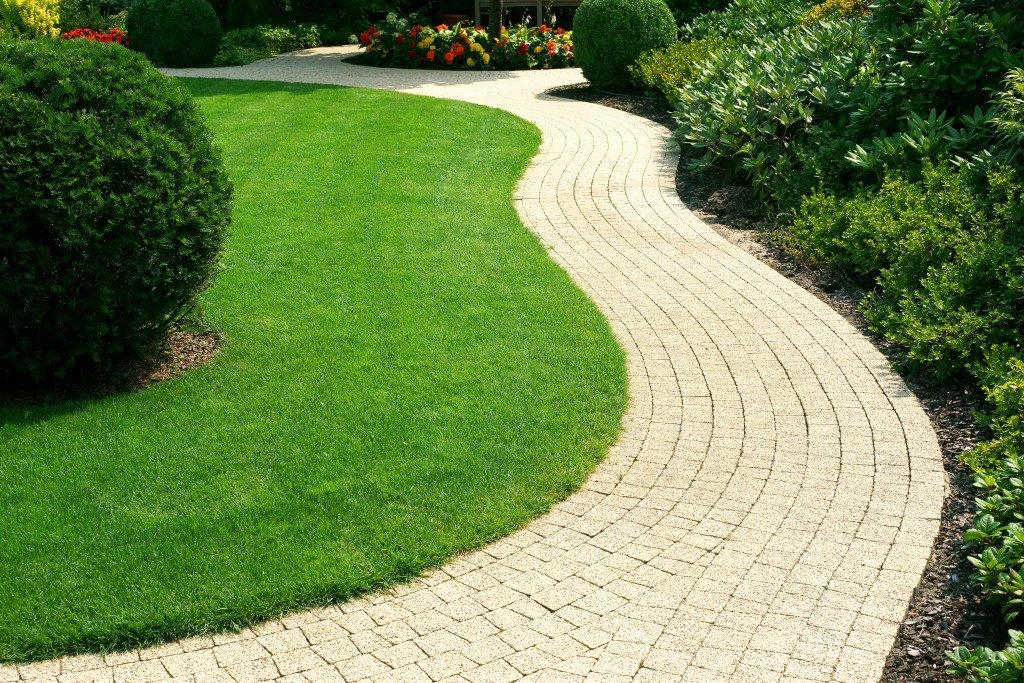What do you think about when you hear phrases like “landscaping,” “trees,” “flowers,” or even “vegetable gardens?”
Hardscapes are the structural foundations of any landscaping design. Hardscapes preserve your lawn and garden and provide logical movement throughout your property.
What Is Hardscaping?
Landscaping has two essential elements, softscaping and hardscaping. Softscaping is the plant life if your landscaping design.
Hardscaping is both flat surfaces such as walkways and driveways, but it’s also raised surfaces like retaining walls. Hardscaping provides visual cohesion to your design and tells visitors how to move through your landscaping.
Imagine this: Your driveway doesn’t meet your front door. Where does a visitor enter your home? Do they have to walk across your lawn to the front door? Do they risk walking through the hedges to the back?
Proper hardscaping provides a path to your front door by setting out stone, brick, or other hardscaping paths from their parked car to your door. It can also lead them to the proper place around back.
Why Use Hardscaping?
Hardscaping provides visual flow. You want your house to welcome visitors indoors by arranging furniture to ease the flow from room to room, right? Outside, hardscaping serves the same purpose.
Paths and walkways protect your lawn from foot traffic to the door. If you don’t add a walkway to withstand foot traffic, the earth will do it for you. You might not be so pleased with the result. Grass dies under constant pressure from foot traffic, or at the least, fails to thrive as footsteps compact the soil.
Most people follow paths instinctively. Let them know where to step.
Does Hardscaping Add Value to the Property?
Hardscaping is the architectural foundation of a landscaping plan. It brings cohesion and functionality. Plus, it reduces the amount of time spent nursing plants.
Well-designed walkways require little maintenance. They help direct traffic and water run-off, provide boundaries for different parts of the landscaping plan, and prevent damage to plant life.
Planning Hardscaping
It pays to research before you put in any hardscaping. Hardscaping is difficult to remove later. You don’t want ill-planned hardscaping to ruin your dream space.
There are a few things to consider when installing paths and walkways.
Curves Versus Lines
Paths aren’t always straight. Curved lines are softer and mimic the paths found in nature. Hardscape elements should transition more gracefully into the softscaping.
On the other hand, more formal gardens and landscaping use straight paths and walkways for symmetry. Walkways are laid out in a grid and offer striking visual cues.
Decide which style suits your design before you start laying down stone.
Consider Plants
Let’s go back to your front door. When you lay down a path from the driveway to the door, add striking design by laying down plant life along one or both sides of the path. This directs traffic even further by creating a barrier between the lawn and the path.
Hardscaping Materials
Think of a few words that define your style, both inside and out. Keep this in mind when choosing materials for your paths and walkways.
Ideally, you want two or three materials that coordinate with design elements outdoors and inside. They should provide pleasing textures and color combinations.
Consult a Professional
If you’re considering a large-scale hardscaping plan, it’s helpful to consult an expert who can help you choose materials suitable for your property. A professional can also help you understand the hidden elements that go into long-lasting hardscaping, such as frost footing and leveling.
Even if your project is a simple path from the driveway to the front door, a professional can help you design the right visual curve or line, plus offer suggestions for which plants to incorporate in your new path.

